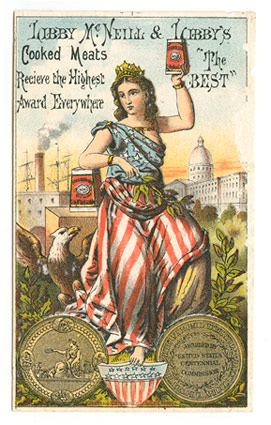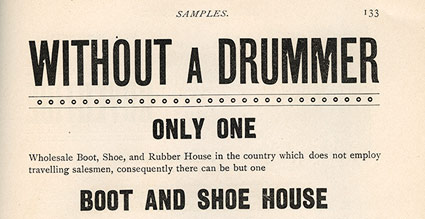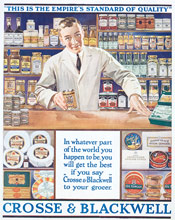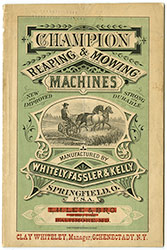The Art of American Advertising:
A Marketing Revolution

“Between the end of the Civil War and the turn of the century, conditions in the American economy and in society merged to satisfy the necessary pre-conditions for advertising to play a very powerful role in creating national markets for consumer goods.”James D. Norris, Advertising and the Transformation of American Society, 1865—1920, 199052
Advertising reached consumers through wholesalers and retailers as well as traveling salesmen who operated as middlemen between manufacturers and retailers. By the 1870s, nearly 50,000 salesmen went door to door distributing trade cards, trade catalogs, and souvenir publications. A change in advertising occurred at the turn of the century when the reduction in postal rates for periodicals resulted in the emergence of national, high-circulation publications. These became major marketing venues especially suited to the promotion of national brand names. Magazines like Century, McClure’s, Ladies Home Journal, and the Saturday Evening Post could feature hundreds of advertisements and began to include three-color printing, half-tone photographs, and full-page ads.
By this time, Americans had become visually literate consumers of commercial messages. “Magazine ads took the place of trade cards within the production of advertising, as well as within the imaginations of a generation of readers primed to appreciate them,” Garvey explains. “The advertising readers . . . both responded to the kinds of accretionary, miscellaneous forms they were familiar with . . . in which commercial and non-commercial messages mingle and prepared themselves for a world in which advertisements were ever more present.”53
The newly emerging field of advertising represented a marketing revolution after the Civil War and played an integral role in promoting mass-produced goods, one of the foundations of the modern economy. Drawing upon new printing technologies and increasingly sophisticated marketing strategies, advertisers explored an imaginative interplay of word, image, and design that crossed the boundaries of art and commerce. Their rapidly proliferating advertising products reached audiences far and wide, permeating public spaces in bold designs and colors with instantly recognizable brand names and inhabiting domestic domains as intimate, familiar tokens and symbols. Advertising media in antebellum America paved the way for all that followed—from magazine ads and giant billboards to television campaigns and internet marketing—and forever changed the nation’s consumer consciousness as the United States transformed from a rural, agrarian country into an urban, industrial nation.
52 Norris, p. xv-xvi.
53 Garvey, p. 18.




